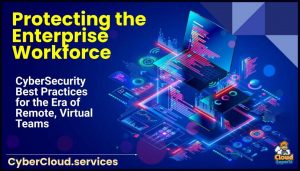Remote Work Cybersecurity: Tips for Protecting Your Business and Employees
While remote work offers flexibility and convenience, it also poses significant cybersecurity risks that individuals and organizations need to be aware of.
 Working from home has become increasingly common, especially in today’s digital age.
Working from home has become increasingly common, especially in today’s digital age.
While remote work offers flexibility and convenience, it also poses significant cybersecurity risks that individuals and organizations need to be aware of.
As the workforce continues to embrace remote work arrangements, the boundaries between personal and professional environments blur, creating new challenges for cybersecurity. Employees working from home are exposed to various online threats that can compromise sensitive data and systems.
Cybersecurity Risks
When working from home, individuals are vulnerable to several cybersecurity risks, including:
- Unsecured Wi-Fi networks.
- Phishing attacks.
- Malware and ransomware.
- Weak password security.
- Device theft or loss.
Mitigation Strategies
To mitigate the cybersecurity risks associated with working from home, consider implementing the following strategies:
- Use a secure and encrypted Wi-Fi network.
- Enable multi-factor authentication for all accounts.
- Install antivirus software and keep it up to date.
- Regularly back up important data to a secure location.
- Implement strong password policies and use password managers.
- Encrypt sensitive communications and files.
- Educate employees on cybersecurity best practices.
Working from home offers numerous benefits, but it also comes with cybersecurity risks that must not be overlooked. By understanding these risks and implementing robust security measures, individuals and organizations can safeguard their data and systems effectively in a remote work environment.
NordLayer
With a centralized Control Panel, NordLayer makes managing your users and network access permissions easier by simplifying the process of creating teams, private gateways, setting access parameters for all users, and accommodating remote working or hybrid work.



